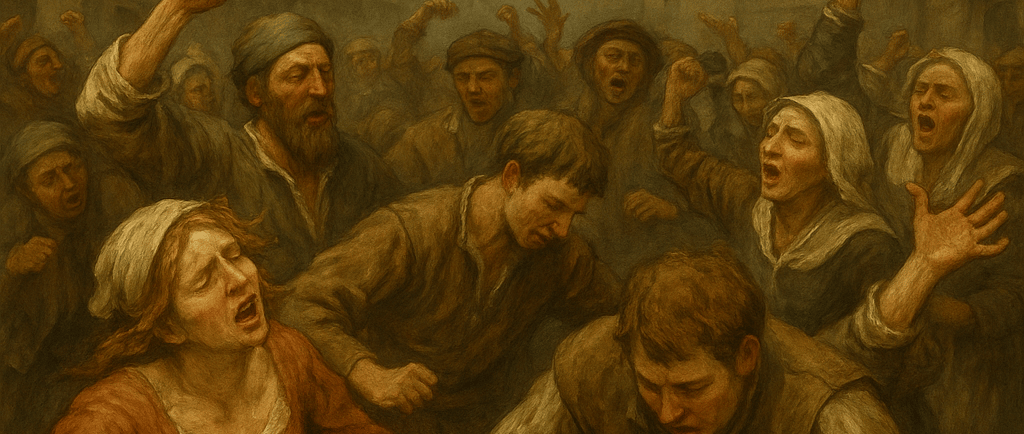The Dancing Plague of 1518: When Hundreds Danced Themselves to Death
Imagine waking up in the summer of 1518 in Strasbourg, France, only to see dozens of your neighbours dancing wildly in the streets – without music, without rest, and without any joy on their faces. This isn’t a scene from a horror movie; it is one of the strangest true stories in recorded history, known as The Dancing Plague of 1518.
The Fact Knower
7/26/20251 min read


The Outbreak
It all began when a woman named Frau Troffea stepped into the street and started dancing. Hours passed, and she didn’t stop. By the end of the week, more than 30 people had joined her. Within a month, around 400 people were dancing uncontrollably, many collapsing from exhaustion. Some reportedly danced themselves to death from strokes, heart attacks, or sheer fatigue.
What Caused It?
Historians and scientists have debated for centuries:
Mass Hysteria (Psychogenic Illness)
The psychological explanation suggests it was a collective stress response. At the time, Strasbourg was suffering from famine, disease, and extreme poverty. The dancing may have been a form of psychological release that spread rapidly due to suggestibility.
Ergot Poisoning (Hallucinogenic Mold)
Another theory is that ergot fungus on rye crops caused hallucinations and convulsions. Ergot contains chemicals similar to LSD, which can trigger twitching, spasms, and bizarre behaviour.
Religious or Spiritual Beliefs
Some believe it was part of a ritualistic curse or penance related to Saint Vitus, the patron saint of dance and epilepsy. People thought they were cursed and would only be cured by dancing.
How Did It End?
Eventually, the city officials, desperate to end the plague, built a shrine to Saint Vitus and transported the dancers there for prayers and rituals. Slowly, the outbreak subsided, leaving behind a chilling mystery that remains unsolved.
Why It Still Fascinates Us
The Dancing Plague of 1518 is a powerful reminder of the human mind’s depths and vulnerabilities. Mass psychological events have occurred throughout history – and still do today in different forms.